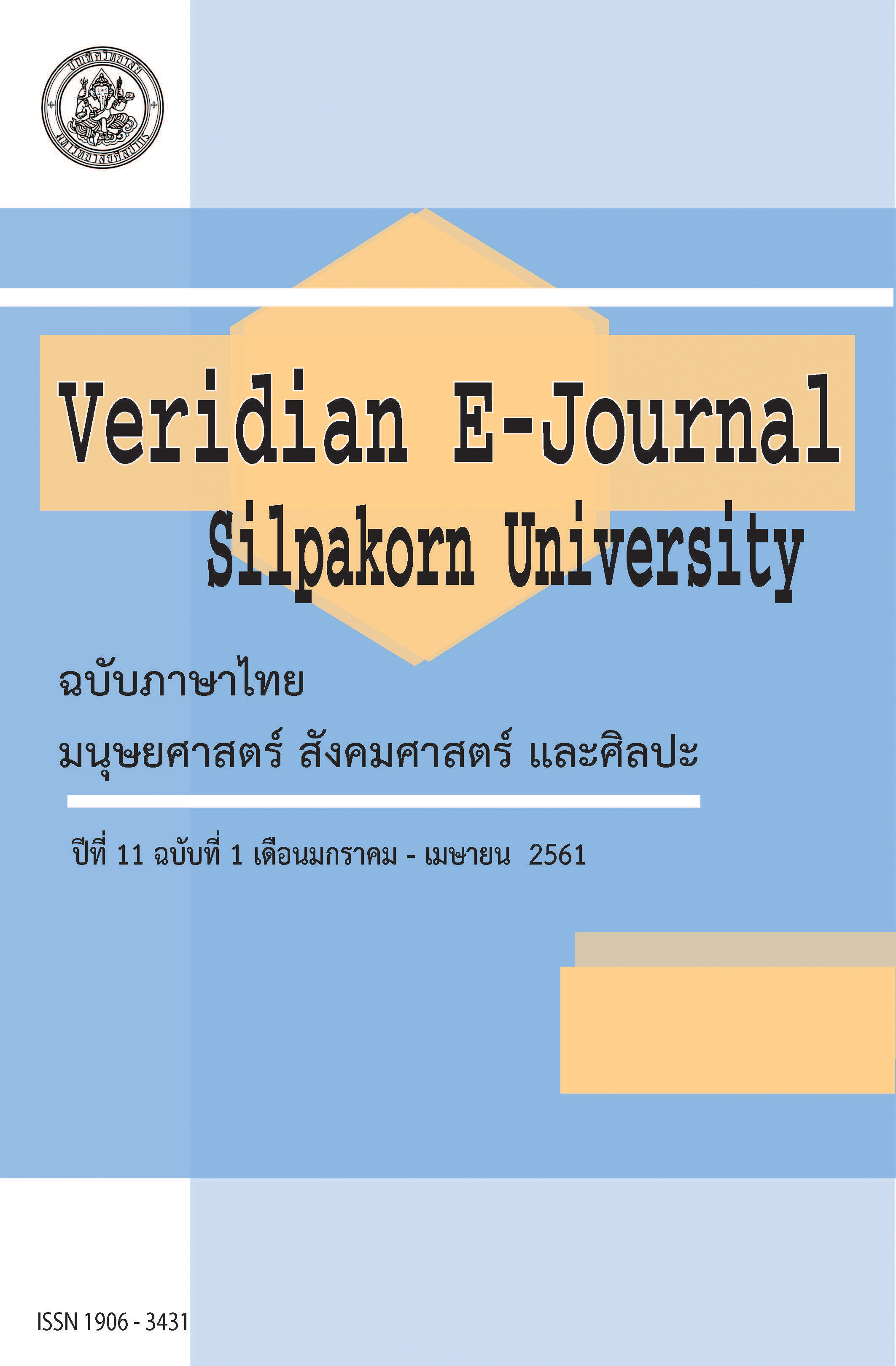การออกแบบพัฒนาเครื่องแต่งกายสตรีจากผ้าไทยด้วย V stitcher Program (3D) (Women’s costumes from Thai fabric with V Stitcher Program (3D))
Main Article Content
Abstract
การออกแบบและพัฒนาเครื่องแต่งกายสตรีจากผ้าไทยด้วยโปรแกม V stitcher Program (3D) นั้นได้สำรวจความต้องการด้านรูปแบบเสื้อผ้าจากบุคคลทั่วไป เพื่อใช้เป็นข้อมูลในการศึกษาแนวทางในการพัฒนารูปแบบผลิตภัณฑ์เครื่องแต่งกายสตรี ซึ่งผลการประเมินนี้นำไปเป็นแนวทางในการพัฒนาเสื้อผ้า สำรวจความคิดเห็นและเก็บรวบรวมข้อมูลจากกลุ่มตัวอย่าง จำนวน 100 คน โดยใช้แบบสอบถามเป็นเครื่องมือในการเก็บรวบรวมข้อมูล และการวิเคราะห์ข้อมูลจะใช้ผลเป็นการแจกแจงความถี่ (Frequency) และค่าร้อยละ (Percentage) พบว่า ด้านข้อมูลทั่วไปผู้ตอบแบบสอบถามส่วนใหญ่เป็นเพศหญิง คิดเป็นร้อยละ 75 มีสถานภาพ บุคลทั่วไป คิดเป็นร้อยละ 58 รองลงมามีสถานภาพผู้ประกอบการอุตสาหกรรมแฟชั่น คิดเป็นร้อยละ 25 อายุระหว่าง 31-40 ปี ประกอบอาชีพธุรกิจส่วนตัว ร้อยละ 66 มีรายได้ 30,001-40,000 บาท ด้านทัศนคติและพฤติกรรมการบริโภคเสื้อผ้าแฟชั่นส่วนใหญ่ พบว่า ผู้ตอบแบบสอบถามส่วนใหญ่มีการเลือกซื้อเสื้อผ้าตราสินค้าต่างประเทศ คิดเป็นร้อยละ 58 มีการซื้อสินค้าด้านเสื้อผ้าเฉลี่ยเดือนละ 1 ครั้ง ร้อยละ 37 ใช้งบประมาณในการซื้อประมาณ 1,500-2,500 บาท คิดเป็นร้อยละ 51 ซื้อในฤดูกาล Summer คิดเป็นร้อยละ 78 รูปแบบชุดในการเลือกซื้อบ่อยที่สุดคือชุดลำลอง คิดเป็นร้อยละ 60 รูปแบบเสื้อตัวหลวม หรือเสื้อคลุม คิดเป็นร้อยละ 44 และเสื้อผ้าสีเข้มได้รับความนิยมในการเลือกซื้อบ่อยที่สุด คิดเป็นร้อยละ 41
การสร้างแรงบันดาลใจจากเสื้อผ้าชาวเขาซึ่งมีเทคนิควิธีการตัดเย็บอย่างง่าย ทุกคนสามารถตัดเย็บได้ และสามารถจำหน่ายได้ในราคาแพงโดยการวิเคราะห์รูปทรงเสื้อพบว่าใช้แบบตัดในการตัดเย็บเป็นรูปทรงสี่เหลี่ยมผืนผ้า และผู้วิจัยได้ออกแบบแนวคิด 3E Concept โดยใช้แบบตัดรูปทรงสี่เหลี่ยมผืนผ้าจำนวน 3 ชิ้น ได้เป็นรูปแบบเครื่องแต่งกายจำนวน 1 รูปแบบ โดยมีพื้นฐานการออกแบบลวดลายบนผืนผ้ามาจากวัฒนธรรมไทยด้วยการใช้แรงบันดาลใจจากถนนคนเดินในพื้นที่จังหวัดเชียงใหม่ ซึ่งเป็นพื้นที่ทางภาคเหนือของประเทศไทย ถ่ายทอดสู่ผืนผ้าจำนวน 1 ชิ้น
Women’s costumes from Thai fabric with V Stitcher Program (3D) were designed and developed from individual differences on styles and needs in order to use a data as a guideline for studying and development of women’s fashion. This assessment led to the method of clothing development. Survey and data collection method from a sample of 100 people were used in this research by using the questionnaire as a tool to collect the information and data analysis as a frequency distribution including the percentage. The results found that most of the respondents were female (75 percent) as the following: 58 percent of general public, 25 percent of fashion industry owners, and 66 percent of business owners who have income between 30001-40000 baht. The consumer behaviour and attitude towards the most fashionable clothes, the researcher also found that 58 percent of respondents mostly purchased imported clothing once a month; 37 percent of respondents spent budget about 1500-2500 baht to purchase, 51 percent of seasonal clothing and 78 percent of summer clothing. The most frequent clothing selection was casual style (60 percent), 44 percent of loose shirt or cloak style, and 41 percent of dark-colored clothing style.
The inspiration was from simple technique of tribal clothes which were used a rectangular shape sewing together, from shape analysis, and can be sold at a high price. The researcher designed a conceptual 3E by using 3 pieces of rectangle shape fabric to form 1 pattern of outfit based on Thailand pattern design of Thai culture by using the pedestrian area in Chiang Mai Province, the North of Thailand, as an inspiration to convey 1 piece of fabric.
